 I love seeing the tables of contents of new journal issues arrive in my email box. I just get so excited about all of the cool new things that people are discovering about groundwater, rivers, climate and rocks. Below are some of my favorite articles from the past month. They reflect an amalgamation of my research, teaching, and personal interests and are only a sampling of the neat hydrogeology, geomorphology, and climate science research that has been recently published.
I love seeing the tables of contents of new journal issues arrive in my email box. I just get so excited about all of the cool new things that people are discovering about groundwater, rivers, climate and rocks. Below are some of my favorite articles from the past month. They reflect an amalgamation of my research, teaching, and personal interests and are only a sampling of the neat hydrogeology, geomorphology, and climate science research that has been recently published.
Fussel, H-M. 2009. An updated assessment of the risks from climate change based on research published since the IPCC Fourth Assessment Report. Climatic Change (2009) 97:469-482. doi:10.1007/s10584-009-9648-5
The takeaway message is this: While some topics are still under debate (e.g., changes to tropical cyclones), most recent research indicates that things are looking even worse now than we thought a few years ago. Greenhouse gas emissions are rising faster than we anticipated, and we have already committed to substantial warming, which is currently somewhat masked by high aerosol concentrations. It is increasingly urgent to find mitigation and adaptation strategies. Not good.
Gardner, LR. 2009. Assessing the effect of climate change on mean annual runoff. Journal of Hydrology. 379 (3-4): 351-359. doi:10.1016/j.jhydrol.2009.10.021
This fascinating article starts by showing a strong correlation (r2 = 0.94) between mean annual runoff and a function of potential evapotranspiration and precipitation. The author then goes on to derive an equation that shows how temperature increases can be used to calculate the change in evapotranspiration, therefore solving the water budget and allowing the calculation of the change in mean annual runoff. Conversely, the same equation can be used to solve for the necessary increase in precipitation to sustain current runoff under different warming scenarios.
Schuler, T. V., and U. H. Fischer. 2009.Modeling the diurnal variation of tracer transit velocity through a subglacial channel, J. Geophys. Res., 114, F04017, doi:10.1029/2008JF001238.
The authors made multiple dye tracer injections into a glacial moulin and then measured discharge and tracer breakthrough at the proglacial channel. They found strong hysteresis in the relationship between tracer velocity and proglacial discharge and attributed this hysteresis to the adjustment of the size of a subglacial R??thlisberger channel to hydraulic conditions that change over the course of the day. Cool!
Bense, V. F., G. Ferguson, and H. Kooi (2009), Evolution of shallow groundwater flow systems in areas of degrading permafrost, Geophys. Res. Lett., 36, L22401, doi:10.1029/2009GL039225.
Warming temperatures in the Arctic and sub-arctic are lowering the permafrost table and activating shallow groundwater systems, causing increasing baseflow discharge of Arctic rivers. This paper shows how the groundwater flow conditions adjust to lowering permafrost over decades to centuries and suggests that even if air temperatures are stabilized, baseflow discharge will continue to increase for a long time.
Soulsby, Tetzlaff, and Hrachowitz. Tracers and transit times: Windows for viewing catchment scale storage. Hydrological Processes. 23(24): 3503 – 3507. doi: 10.1002/hyp.7501
In this installment of Hydrological Processes series of excellent invited commentaries, Soulsby and colleagues remind readers that although flux measurements have been the major focus of hydrologic science for decades, it is storage that is most relevant for applied water resources problems. They show that tracer-derived estimates of mean transit time combined with streamflow measurements can be used to calculate the amount of water stored in the watershed. They use their long-term study watersheds in the Scottish Highlands to illustrate how transit time and storage scale together and correlate with climate, physiography, and soils in the watersheds. Finally, they argue that while such tracer-derived storage estimates have uncertainties and are not a panacea, they do show promise across a range of scales and geographies.
Chatanantavet, P., and G. Parker (2009), Physically based modeling of bedrock incision by abrasion, plucking, and macroabrasion, J. Geophys. Res., 114, F04018, doi:10.1029/2008JF001044.
Over the past 2 decades, geomorphologists have developed much better insight into the landscape evolution of mountainous areas by developing computerized landscape evolution models. A key component of such models is the stream power rule for bedrock incision, but some have complained that is not physically based enough to describe. In this paper, the authors lay out a new model for bedrock incision based on the mechanisms of abrasion, plucking, and macroabrasion (fracturing and removal of rock by the impact of moving sediment) and incorporating the hydrology and hydraulics of mountain rivers. This could be an influential paper.
Payn, R. A., M. N. Gooseff, B. L. McGlynn, K. E. Bencala, and S. M. Wondzell (2009), Channel water balance and exchange with subsurface flow along a mountain headwater stream in Montana, United States, Water Resour. Res., 45, W11427, doi:10.1029/2008WR007644.
Tracer tests were conducted along 13 continuous reaches of a mountain stream to quantify gross change in discharge versus net loss and net gain. Interestingly, the change in discharge over some reaches did not correspond to calculations of net loss or net gain based on tracer recovery. These results suggests that commonly used methods for estimating exchange with subsurface flow may not be representing all fluxes. Bidirectional exchange with the subsurface, like that found in this paper, is likely to be very important for nutrient processing and benthic ecology.
Please note that I can’t read the full article of AGU publications (including WRR, JGR, and GRL) until July 2010 or the print issue arrives in my institution’s library. Summaries of those articles are based on the abstract only.
![]() Here’s another cool image from Cassini, showing sunlight glinting off the surface of a lake in Titan’s northern hemisphere.
Here’s another cool image from Cassini, showing sunlight glinting off the surface of a lake in Titan’s northern hemisphere.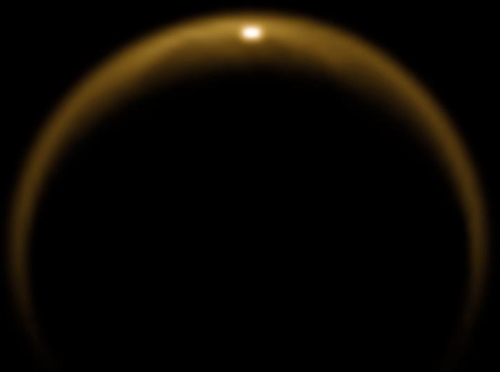
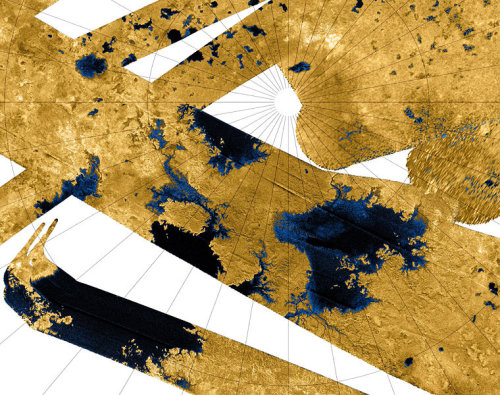

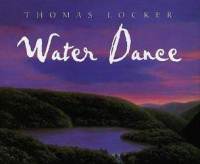
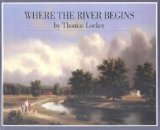
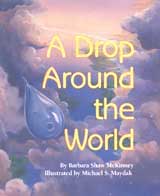
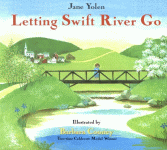
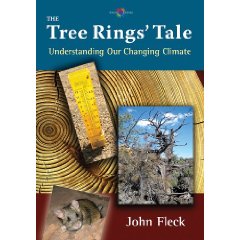



Nice plan for content warnings on Mastodon and the Fediverse. Now you need a Mastodon/Fediverse button on this blog.